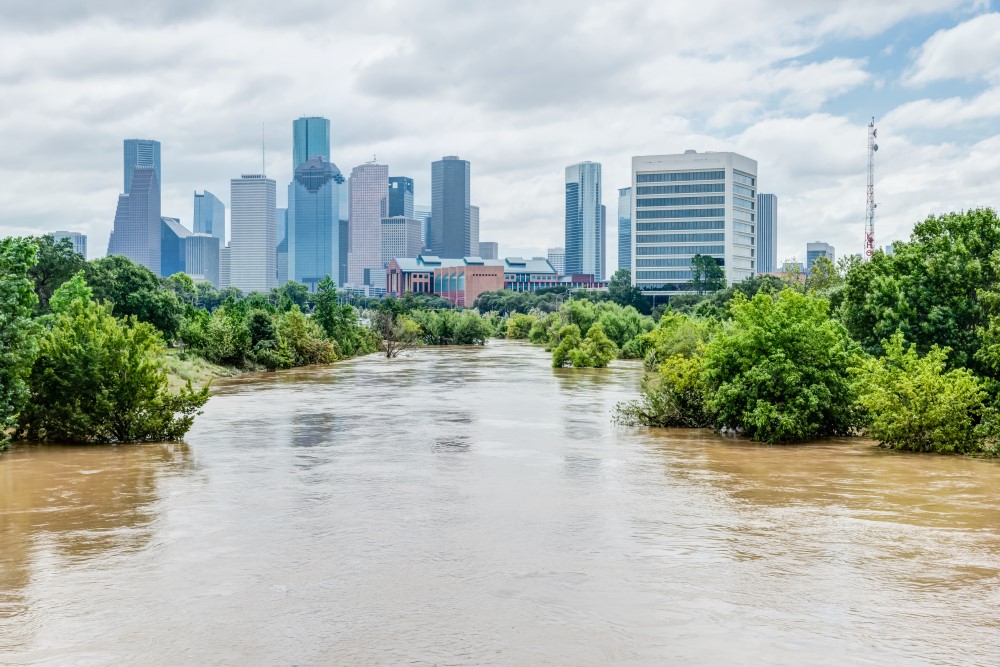Fan alert: U.S. football stadiums are at high risk of extreme weather disruptions

This weekend’s Big Game will be one of the most watched annual sporting events in the world, broadcast in over 130 countries and in more than 30 languages. Over 200 million viewers watched the 2022 annual playoff game, which marks the grand finale of the U.S. football season. This year, on February 12, eyes from across the world will be focused on the State Farm Stadium in Arizona to watch the Eagles battle the Chiefs, but at Cervest we’ll also be watching another head-to-head battle - the one between our increasingly volatile climate and the Big Game stadiums.
Physical climate risks impacting the future of stadium sports
Using EarthScan™, Cervest’s climate intelligence product, we have investigated the level of climate risks facing nine U.S. football stadiums* that have already or will be hosting the American football’s headline sporting event - in less time than it takes for the national anthem to be sung at the game opener. While you need to be a trained athlete to compete for the coveted Championship ring, you don't need to be a climate scientist to understand our climate intelligence.
EarthScan allows you to view the climate risks facing assets, from hazards including extreme wind, heat stress, drought, flooding, precipitation and wildfire. You can choose from three climate emissions scenarios and look back to 1970, and up to 2100 in 5-year time increments. Each asset is given a Cervest Rating™ on a scale from A to F where A represents extremely low climate-related risk and F represents extremely high climate risk.
The resulting EarthScan insights make it clear that as early as 1970, the average Cervest Rating for heat stress at these locations was C, which represents a significant or material risk to the assets. Looking at the near future, in 2025, this risk increases to Cervest Rating D, and the Rating continues to worsen as the decades progress, reaching Cervest Rating E by 2065.

Fig 1 shows that in 1970 across the nine football stadiums, heat stress exposure was at Cervest rating C - Medium climate risk

Fig 2 shows that in 2025, across the nine football stadiums heat stress exposure will reach Cervest rating D - High climate risk.

Fig 3 shows that in 2065, across the nine football stadiums heat stress exposure will reach Cervest rating E - Very high climate risk.
What does this physical climate risk mean for sports fans?
High temperatures are expected at stadiums in desert locations, and while some adaptation measures are already in place to help protect players and spectators (and sponsorship dollars), these measures do not come cheap. The owner of State Farm Stadium, the Arizona Sports and Tourism Authority, reportedly sold $146.3 million of municipal bonds; a portion of the financing was invested into a number of essential climate adaptation measures, including improved ventilation and air conditioning. Will these measures be enough as temperatures continue to rise? It’s highly likely that in addition to implementing further adaptation measures, costs to power and maintain the ventilation systems and air conditioning will increase exponentially. Fans would trade comfortable temperatures and air flow for higher ticket prices.
Adaptation measures to the stadium itself are not the end of the story. People come to watch the game (and the highly entertaining halftime show!) from across the world, and many will wish to stay in the local area. Arizona has recently reached record-breaking temperatures exceeding 122 Fahrenheit (50C), and experts predict the “heat island effect” will make the state capital, just 18 miles away from the stadium, uninhabitable in the very near future. Fans may find it increasingly difficult to find convenient or affordable accommodation for their visit… we may be looking at a bleak future where the players outnumber the fans in the stands.
“Climate change will put increasing pressure on city planners, governments, businesses (including stadium owners), and citizens to accelerate their climate adaptation efforts. Prioritizing heat action planning is key to preventing deaths, negative health impacts, and damage and disruption to essential infrastructure. To do that effectively, decision-makers need to first understand their exposure to extreme heat, along with other climate hazards and how it could impact their assets now and in the future.”
How can cities assess their climate risk and build climate resilience?
U.S. football stadiums are notoriously a huge investment, with construction and renovation costs known to go well into the billions. This spending is a gamble by the cities vying to host major sporting events, hoping to receive a huge return on their investment from economic activity from fans. With increasing climate risk threatening to turn tourists away over the coming years, this may not be seen as such a promising investment choice.
Using climate intelligence from a product such as EarthScan, stadium decision makers can discover their climate-related risk in the short- and long- term, and make impactful decisions to build resilience.
Honing in on the location of this year’s host stadium, Arizona is one of several U.S. Southwestern states already facing a megadrought, and stadium stewards, just like any other asset managers, can benefit from the same access to climate intelligence to delve into how this drought may progress over time. For those assets not already affected by drought, decision makers can investigate the likelihood of climate hazards having an impact in the future. With a clear picture of risks, they can develop and implement resilience plans. These may include further retrofitting the stadiums with, for example, additional irrigation for improved water supply. They might also choose to alter opening times to contain costs during the hottest months of the year.
Looking beyond sports and stadiums to community wellbeing
Of course, extreme weather impacts are not limited to blockbuster annual sporting events, Arizona, specifically the State Farm Stadium, offers us a proverbial canary in a coal mine for climate risk and impact. In 2022 there were 378 confirmed heat-associated deaths in Arizona’s largest county, and with temperatures forecast to rise, tragically this number may well increase year on year. Arizona serves as a warning that the economic, social and business impact of climate change cannot be ignored.
Using CI, State officials can mitigate the worst threats from climate hazards by investing in adaptation initiatives to keep assets and infrastructure and, most importantly, the inhabitants protected from our volatile climate.
At Cervest we may not be able to forecast the future Big Game winners, but our science-backed climate intelligence can help stadium owners and managers develop the climate adaptation playbook to protect their investment – and the future of Americans’ beloved game.
*Nine U.S. football stadiums included in the analysis by EarthScan:
Caesars Superdome in New Orleans, Louisiana
Hard Rock Stadium in Miami, Florida
State Farm Stadium in Glendale, Arizona
MetLife Stadium in East Rutherford, New Jersey
Levi’s Stadium in Santa Clara, California
U.S. Bank Stadium in Minneapolis, Minnesota
Mercedes-Benz Stadium in Atlanta, Georgia
SoFi Stadium in Inglewood, California
Allegiant Stadium in Paradise, Nevada
To stay up-to-date with the latest news and insights from Cervest, subscribe to our newsletter
Share this article
Our latest news and insights

Accenture and Cervest collaborate to bring innovative solutions to clients seeking resilience amid increased climate risk
Read more
What is climate intelligence and why do businesses and governments need it?
Read more